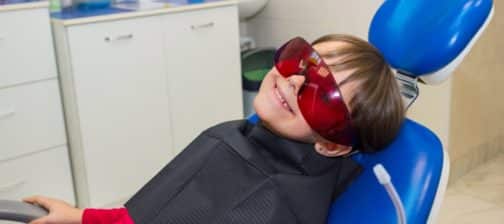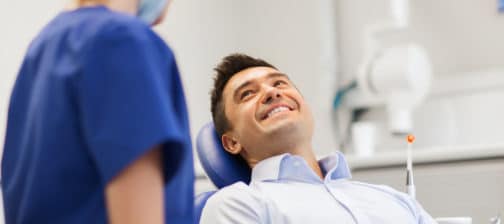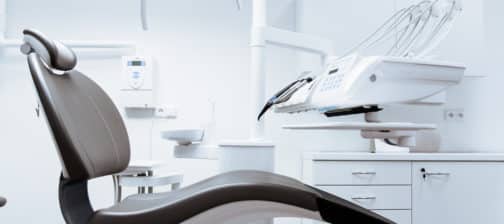Every dentist uses laughing gas at some point. It’s commonly used in dentistry because it is an excellent way to relieve any pain that could be experienced in minor surgeries or extractions. But where did the term “laughing gas” come from? To get an inside look at the story behind the name, here’s a brief explanation of its discovery and use throughout history.
Early Use
Laughing gas was first discovered by an English chemist named Joseph Priestly in 1772. Upon experimenting with heating iron filings dampened with nitric acid, he created nitrous oxide. He realized he made an important potential discovery and soon published his findings in a book, which lead to other experiments that were conducted by chemists. Humphry Davy, who was experimenting with new gases for patients to inhale, realized that nitrous oxide had analgesic properties that could be useful for surgical operations in 1800. He coined the name “laughing gas,” and the name soon became familiar as the gas became an instant hit at parties of the British upper class. They enjoyed the effects of the gas produced, often generating the giggles and making them feel light headed and drunk.
Medical Use
The first use of nitrous oxide in practice was by Horace Wells, Gardner Quincy Colton and John Riggs in 1844. They had found that they could use the gas to help relieve pain when
performing dental extractions. Unfortunately, the gas did not gain wide acceptance in the dental industry because of a failed presentation that Wells conducted, leaving other dentists to question its safety. It was not until Gardner Quincy Colton started using it in his dental clinics that people started to take notice. He had administered the gas to over 25,000 patients in just 3 short years with success, which attracted other practitioners to its use.
The Effects
Nitrous oxide is used widely in dentistry today because of its anesthetic properties. When the gas is administered, it creates an initial tingling sensation, followed by warm sensations and then a euphoric feeling that leaves people feeling happily at ease, which sometimes results in laughter. It has been found to have many benefits that assist dentists with minor surgeries. For one, it works very rapidly where the effects are almost instantaneous. The level of sedation can also be easily controlled by the dentist. After the gas is turned off, there are little to no side effects, and the gas wears off instantaneously so you can return to your regular activities right away.
Laughing gas is a safe and effective alternative to IV sedation. We use it to help relieve pain for patients who are nervous, as well as during minor surgeries and extractions. To find out more how we use laughing gas in our dental practice, contact us at Teal Umbrella.




